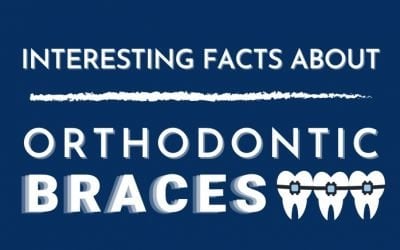Gingivitis and Braces
Braces also work to correct a bad bite and align your jaw. But the wires and brackets do make it harder to brush and floss your teeth effectively, potentially leading to a build-up of plaque and a mild gum disease known as gingivitis.
“Gingivitis” is technically inflammation in the gingiva – the section of gum closest to your teeth – leading to puffy and swollen gums which are prone to bleeding. The good news? Gingivitis is highly treatable and very preventable! Here’s what you need to know about gingivitis and braces.
Is gingivitis common with braces?
Truthfully? Yes. Gum disease is common in the general population, with around 80% of American adults suffering from it in some form or another. But gingivitis is especially common with braces.
Braces exert a subtle yet steady pressure in order to gradually straighten your teeth. However, the extra “hardware” makes it harder to clean your teeth and gums effectively. And it takes more time to do it well. This is why gingivitis is so common in patients with braces, as the bacterial plaque is not cleaned off the teeth and the gums respond to the plaque by becoming inflamed.
Gingivitis can lead to a more serious bacterial infection called periodontitis – a leading cause of tooth loss – if left untreated. Periodontitis is more common in adults, however, some children can also experience juvenile periodontitis in certain situations. This is why is it so important to see a real-life orthodontist, as direct-to-consumer products generally do not have the safe-guards of seeing a real-life practitioner.

How to prevent gingivitis with braces
Mild and transient gingivitis is very common while undergoing braces treatment. But don’t despair! There are a number of proactive steps you can take to greatly reduce your chances of getting more serious gum disease.
1. Brush three times a day (minimum)
Maintaining excellent oral hygiene is even more important with braces. To ensure sticky plaque doesn’t harden into difficult-to-remove tartar, it’s imperative your brush your teeth three times a day – after meals and before bed. Snuck in morning or afternoon tea? Then you’ll want to sneak in an extra brushing session, too! Trapped food particles may also cause tooth decay.

2. Floss once a day
It’s best to floss before sleeping so you go to bed with clean teeth. At the very least, just ensure you floss at least once a day. A morning floss is better than no flossing at all.
3. Book in for regular professional teeth cleaning
Maintaining excellent oral hygiene is most important, however, many patients need a thorough “spring clean” (i.e. professional tooth clean with their general dentist) to keep gingivitis and other types of gum disease at bay. Only a professional can remove hardened plaque (i.e. tartar) effectively. Booking in for a regular cleaning session is one of the best ways to prevent serious gum problems.
To read the original article, click here.
DISCLAIMER:
The content has been made available for informational and educational purposes only. Central Coast Orthodontics does not make any representation or warranties with respect to the accuracy, applicability, fitness, or completeness of the content.
The content is not intended to be a substitute for professional personal diagnosis or treatment. Always seek the advice of your dentist or another qualified health provider with any questions you may have regarding a dental or medical condition. Never disregard professional advice or delay seeking it because of something you have read or seen on the Site.
Learn More About
Related Articles
Unfinished Smiles Welcome Here – We’ll Pick Up Where You Left Off
Is Smile Direct Club’s insolvency leaving your teeth realignment process stranded? As Invisalign Diamond Plus providers…
Interesting Facts About Orthodontic Braces
Wanting to get orthodontic braces but feeling unsure because you don't have knowledge about its...
Three Benefits of Invisalign
Did you know that aside from being an option for straightening your teeth, there are also benefits...
Metal Braces: Does This Traditional Dental Technology Have a Future?
Of all the medical professions, dentistry has always generated the most fear and continues to;...







